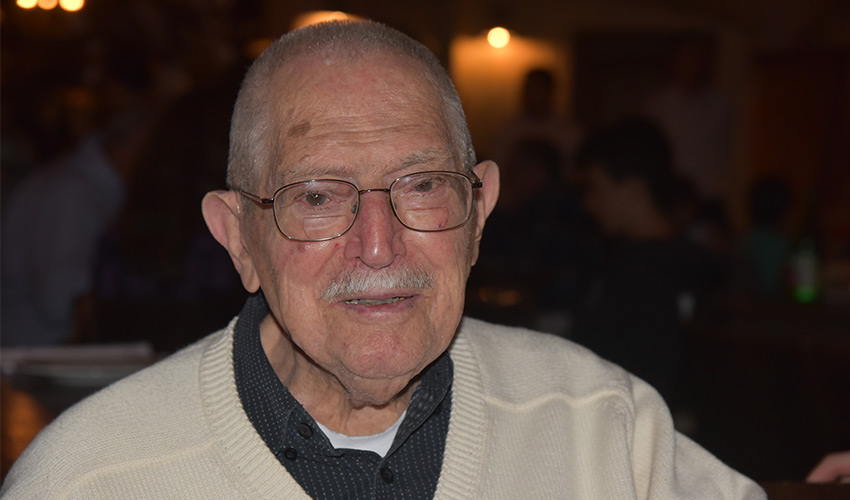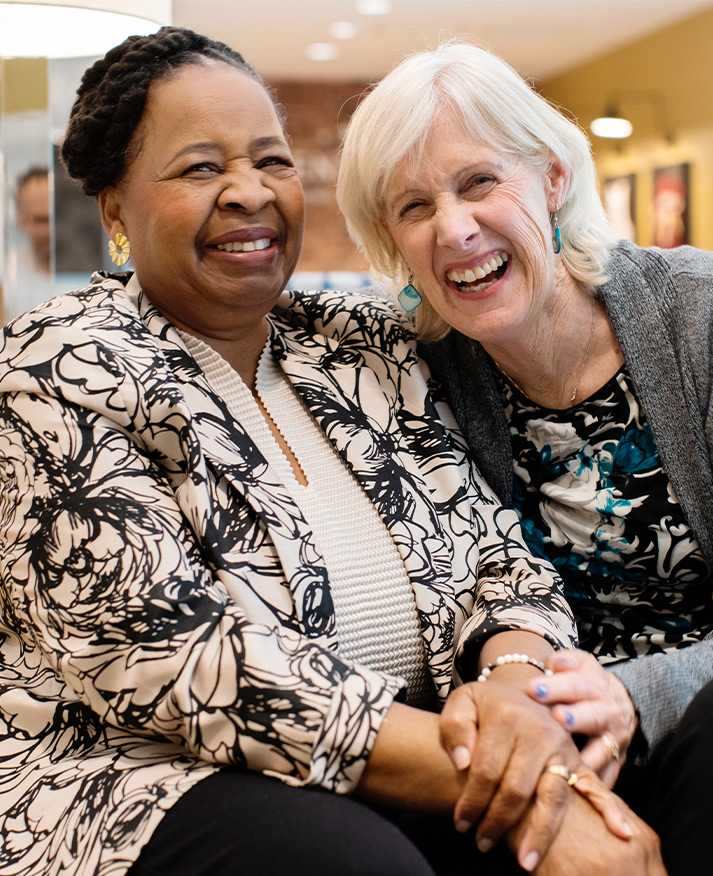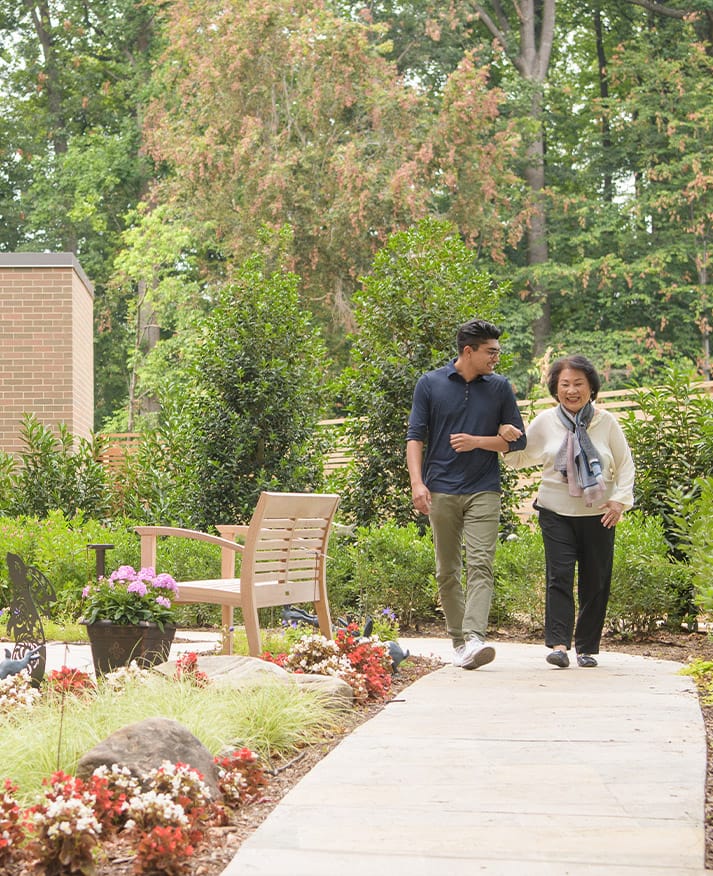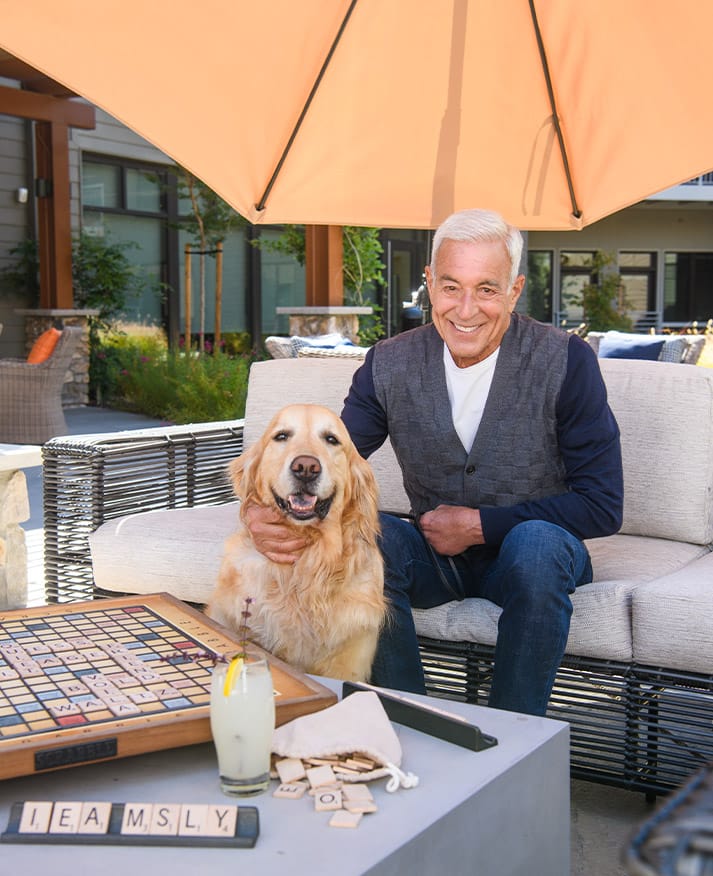On Veterans Day 2020, talking to a veteran born in 1920

Frank Caruso served in World War II and Wednesday, just eight days shy of his 100th birthday, his memory still serves him remarkably well.
He sits in his wheelchair in The Fountains at RiverVue retirement home in Tuckahoe beside Anna, his wife of 72 years – to whom he gives the credit for his long and happy life.
"She was the perfect wife and perfect mother," he said. "She is an important part of this story."
Caruso's stories fly with flecks of tantalizing detail, from the shadow of Mount Vesuvius to "Mad Men"-era Madison Avenue and beyond.
"I have to think, 'What era did I do that in?' because I sort of had separate different lives that I've lived through the years," Caruso said. "You try to remember them in groups."
99 years, 51 weeks
Each "group" is well-represented as Caruso speaks, inching his wheelchair forward, a storyteller eager to be closer to his audience.
There were the early years in his native Detroit, before his tailor-father Michele Caruso, a native of Abruzzo, Italy, moved the family to the Bronx in 1929. Then came the Depression and his war years in the Army, service that found him in Rome, shaking hands with Pope Pius XII.
After the war came his wife, Anna, and their children: daughter, Denise, who died at 53 in 2010; and son, John, 60, who lives in Yonkers, 5 minutes away.
Caruso spent years as a commercial artist on Madison Avenue. From 1956 to 1987, he worked in commercial packaging for American Can Company, in Midtown Manhattan and, later, Greenwich, Connecticut.
It was in those Midtown "Mad Men" years that he developed a cherished ritual that he said was one of his secrets to a long life: a single vodka martini a day, chosen for a specific reason. He retired to the Lawrence Park West section of Yonkers and came to RiverVue about a year ago.
That he has lived 99 years and 51 weeks – through war and, now pandemic – is remarkable. The U.S. Department of Veterans Affairs estimates that fewer than 325,000 of the 16 million Americans who served in World War II are still alive.
He wears a mask out of deference to the coronavirus pandemic – which has hit the elderly hardest, accounting for 171,814 deaths of those age 65 or older, according to the Centers for Disease Control and Prevention.
 Cold, heat, mud
Cold, heat, mud
When Caruso remembers his military service – as an artillery instrument operator, siting shells in Gen. Mark Clark's Fifth Army in North Africa and the invasion of Italy – his memories are part battle objectives, part weather report.
"You listen to artillery shells all day long, back and forth," he said. "The Germans shelling, the Americans shelling all day."
He was there at the tail end of Operation Torch in North Africa, with German Field Marshal Irwin Rommel pulling out of the land that earned him his nickname, the Desert Fox.
Then Caruso moved onto Corsica and on to Salerno, as the Americans worked their way up Italy's "boot." There was time spent in Naples, where, at night, he could see flames rising from a simmering Mount Vesuvius.
There was, by Caruso's account, all kinds of weather, conjuring images from Pulitzer Prize-winning cartoonist Bill Mauldin, whose work regularly depicted soggy GIs in flooded foxholes.
Caruso's basic training was on "bitter cold Cape Cod," followed by a landing in North Africa, "where it was 120 degrees in the shade, and we were wearing the same clothes" from basic training.
Caruso found time for one non-artillery assignment in Corsica while waiting for the storming of Italy: Knowing that Caruso was an artist, a friend volunteered him to decorate a B-25 bomber nicknamed Sahara Sue II.
A corporal who would later go on to a career as a commercial artist, Caruso remembered having to scour the airfield for paints and brushes before spending two weeks or so to emblazon the plane with a leggy lady.
Last year, 76 years later, Caruso met a retired Air Force officer at Westchester County Airport, where World War II-era aircraft were on display. Within hours of mentioning that long-ago painting assignment to the officer, "I came home and he flipped this onto my computer."
A photo of Sahara Sue II.
"He found this plane," Caruso said, his voice full of awe. "Now, you tell me how they found this plane, of all the thousands of planes we had."
After Corsica came the invasion of Italy, at Salerno.
"We all thought it was sunny Italy, but when we got there, it was the rainy season and the entire country was a swamp," Caruso recalled. "The mud was ankle deep and it was raining all the time. Then the frost came and then we got into trouble with the frost."
Salerno to Naples to Monte Cassino
The Americans fought north from Salerno to Naples and on to another key objective: the monastery atop Monte Cassino.
"The Germans occupied it and had the entire thing protected," Caruso said. "The Fifth Army spent months trying to get Monte Cassino and neither side would bomb it. They couldn't shake it loose."
Bombing was finally approved on Feb. 15, 1944.
"I remember that day very vividly, because it felt like every plane in Italy was in the air dropping bombs," Caruso recalled. "And after it was all through, the Germans still had it. It was so well guarded. They had to go up on foot, climb up the side of mountain on foot to take it eventually."
When the war in Europe ended, Caruso was in Pisa, within walking distance of the leaning tower, which was spared bombing, as was the Vatican. V-E Day in May 1945 wasn't a big blowout for GIs still in Italy, he recalled.
"We did a little celebrating," he said. "Not much."
When a visitor expresses surprise that the end of the war in Europe didn't launch a huge party, Caruso offers a simple defense: "Well, they didn't have much good booze," he said. "They mostly had cordials."
There was another war, still raging in May 1945 when Germany surrendered.
"The big fear we all had was that when the war ended in Europe we were going to be shipped to Japan," he said. But the point system – years of service overseas and combat service pins – meant Caruso was sent home. He was discharged in November 1945.
When he returned to the Bronx, he had spent 30 months overseas.
"That was a pretty rough deal, I think, for anybody," he said. "Nobody could go home those days. They didn't have rotations."
Marriage and 'Mad Men' martinis
Back in the Bronx, a relative introduced Caruso "to a school chum" of Anna Pace. Before long, he and Pace were dating. She lived at 187th Street and Crotona Avenue, 10 minutes from his home on the Grand Concourse at 198th. They married on Feb. 7, 1948.
He earned his Pratt Institute advertising design degree at night while working for a Manhattan ad agency, then he got a job in package design for American Can Company, where he stayed for 31 years, from 1956 to 1987.
His portfolio brims with designs for Fanta soda and Schlitz cans, and print ads that would find their way into glossy magazines and newspapers.
Asked for the secret to his longevity, he turns to his wife of 72 years.
"There she is," he said. "There's the secret."
Then he offers another suggestion.
"I have a longevity medicine," he said with a twinkle in his eye. "One Absolut vodka martini a day, just one, with a drop of Vermouth and no fruit."
It was a habit he developed on Madison Avenue. He said he loved working in Midtown in that post-war era, where you could find anything you wanted and lunches were regularly accompanied by a cocktail.
"Madison Avenue was known for its swingers and everything else, and for a long time, everybody drank Manhattans," he said. "But here's the secret: You drink a Manhattan, you come back, they can smell you a half-a-mile away. You drink a vodka martini, they can't tell. That's how it became popular. That's the truth."
Caruso shrugs when asked if his war years – those months spent in all kinds of weather, seeing comrades fall – affected him, made him the man he became.
"I don't know about that, truthfully," he said. "Maybe I was too young. It didn't affect me that much. Overseas was a long time, but I survived. A lot of guys didn't survive."
--
Article from Rockland/Westchester Journal News
Peter D. Kramer is a 32-year staffer at The Journal News. He can be reached at pkramer@lohud.com or on Twitter at @PeterKramer.
Photo by Tania Savayan - The Journal News.



